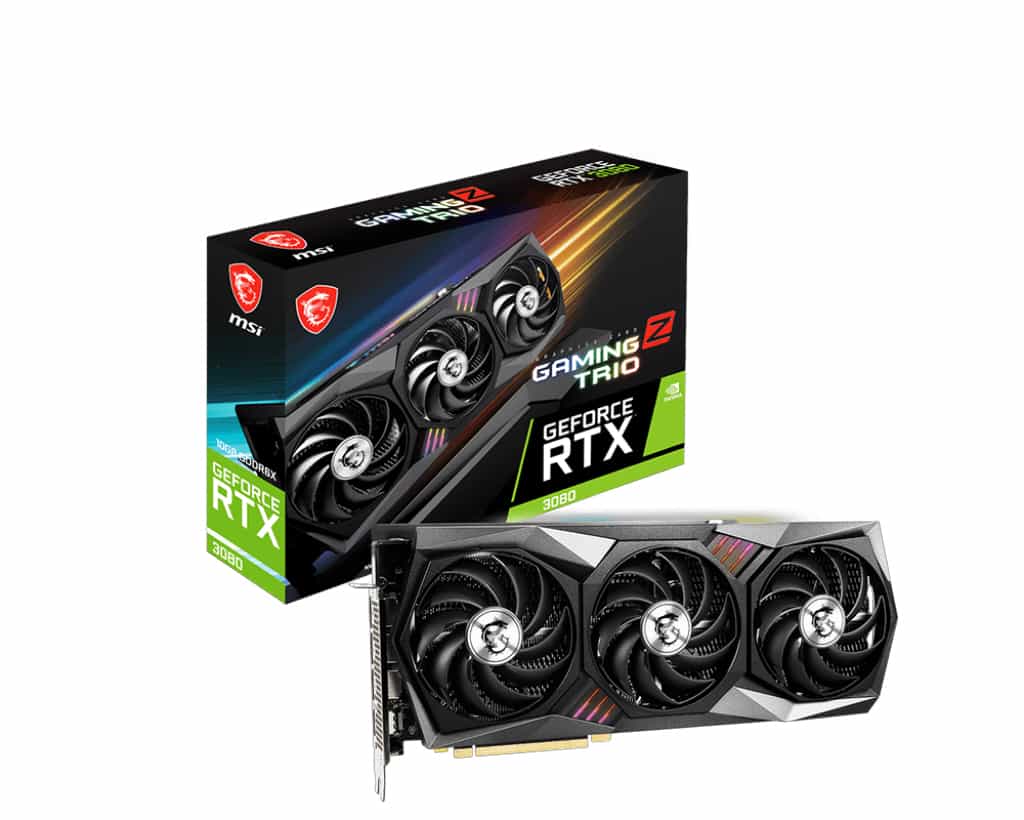The launch of the NVIDIA GeForce RTX 3080 graphics card has been highly anticipated among gamers and technology enthusiasts. This powerful GPU promises to deliver stunning graphics and lightning-fast performance for the most demanding games and applications.
One of the GeForce RTX 3080’s critical features is its power requirements. This graphics card is designed to require three 8-pin power connectors, a significant increase from previous models. Unfortunately, this has caused some confusion among users, who wonder whether all three 8-pin connectors are necessary for the card to function correctly.

If your graphics card requires three 8-pin power connectors and your power supply unit (PSU) only has two PCIe cables, you should not leave one of the 8-pin connectors dangling. Instead, you should use three lines from your PSU to your GPU.
Using separate cables for each 8-pin power connector provides the necessary power delivery to your graphics card without straining any individual cable or connector. Conversely, leaving an 8-pin connector dangling or splitting a single PCIe cable to provide power to two connectors can cause insufficient power delivery, damaging your GPU or your entire system.
Therefore, it is recommended that you use three separate PCIe cables from your PSU to provide power to your graphics card. If your PSU does not have enough PCIe cables, you may need to consider upgrading to a higher-wattage PSU that provides enough PCIe cables to support your graphics card’s power requirements.
Does GeForce RTX 3080 Need All 3×8 pins?
The GeForce RTX 3080 graphics card requires all three 8-pin power connectors to correctly operate the power supply unit (PSU). This high-performance graphics card requires significant power, so the three 8-pin connectors must give the card enough force to perform at its full potential.
Using fewer than the required number of power connectors can cause the card to underperform or even result in instability or damage to the GPU or the system as a whole. Therefore, it is recommended that all three 8-pin power connectors provided with the RTX 3080 be used to ensure that the power supply unit is rated for sufficient wattage to support the GPU’s power requirements.
NVIDIA recommends a minimum power supply of 750 watts for the card, which should provide enough power to all three connectors.
The reason for the three 8-pin connectors is simple: the GeForce RTX 3080 is one of the most powerful graphics cards on the market, requiring a lot of power to function correctly. Each 8-pin connector can deliver up to 150 watts of power, meaning three connectors can provide up to 450 watts.
Using all three 8-pin connectors ensures that the GPU has access to the power it needs to perform at its best. Splitting a single PCIe cable to provide power to two connectors or leaving an 8-pin connector dangling can cause insufficient power delivery and damage the GPU or the entire system.
Specifications of the NVIDIA GeForce RTX 3080 graphics card:
- Architecture: Ampere
- CUDA Cores: 8,704
- Boost Clock: 1,710 MHz
- Memory Interface Width: 320-bit
- Memory Bandwidth: 760 GB/s
- VRAM: 10 GB GDDR6X
- TDP: 320W
- Recommended PSU: 750W
- Ray Tracing Cores: 2nd Generation
- Tensor Cores: 3rd Generation
- NVIDIA DLSS: Yes
- NVIDIA G-SYNC: Yes
- DisplayPort: 1.4a (up to 7680×4320@60Hz)
- HDMI: 2.1 (up to 7680×4320@60Hz)
- Dimensions: 285 mm x 112 mm x 4-slot
- Cooling: Triple-fan
- Power Connectors: 3 x 8-pin
- Outputs: HDMI 2.1, DisplayPort 1.4a x 3
In addition to the power requirements, the GeForce RTX 3080 features other impressive specifications. The card boasts 8704 CUDA cores, 10GB of GDDR6X memory, and a boost clock speed of up to 1710 MHz. It also supports the latest technologies, such as real-time ray tracing and AI-powered DLSS.
Overall, the GeForce RTX 3080 is a powerful graphics card that requires substantial power to function at its best. However, with the proper setup, it can provide unparalleled performance and a truly immersive gaming experience.
- Facebook Ads to Get Followers! - December 27, 2024
- ClickUp vs. Slack - December 20, 2024
- Mastering E-Commerce Analytics: A Blueprint for Success





